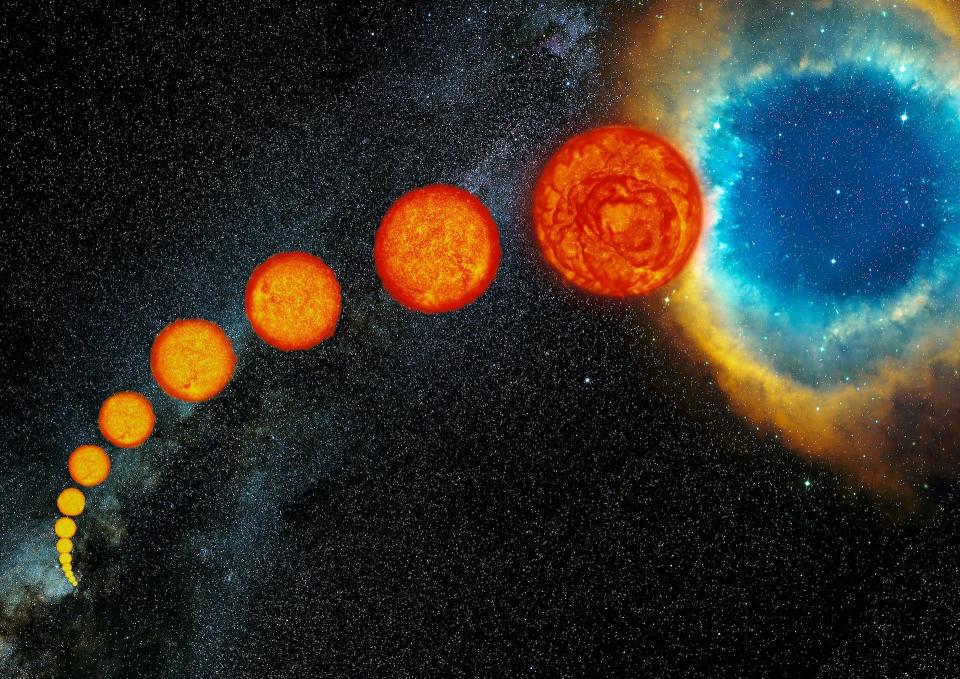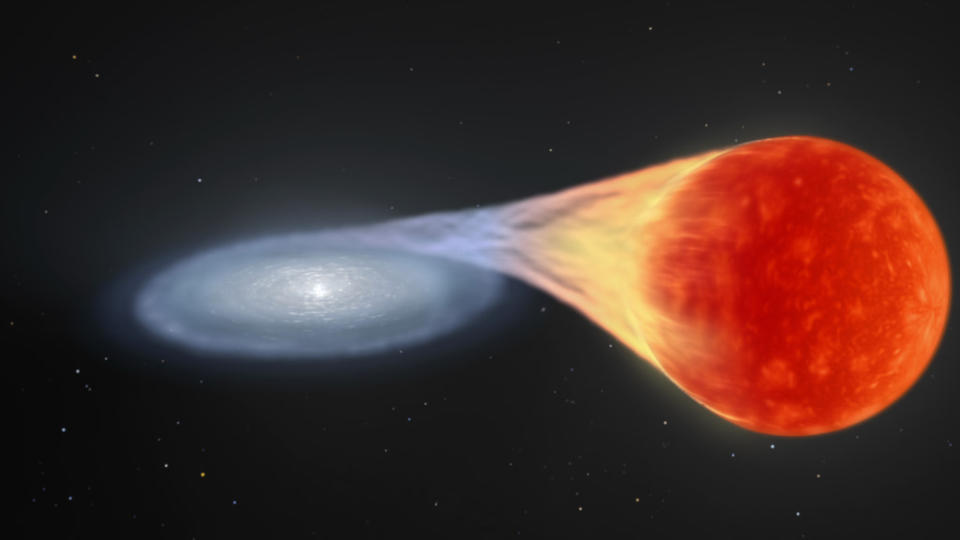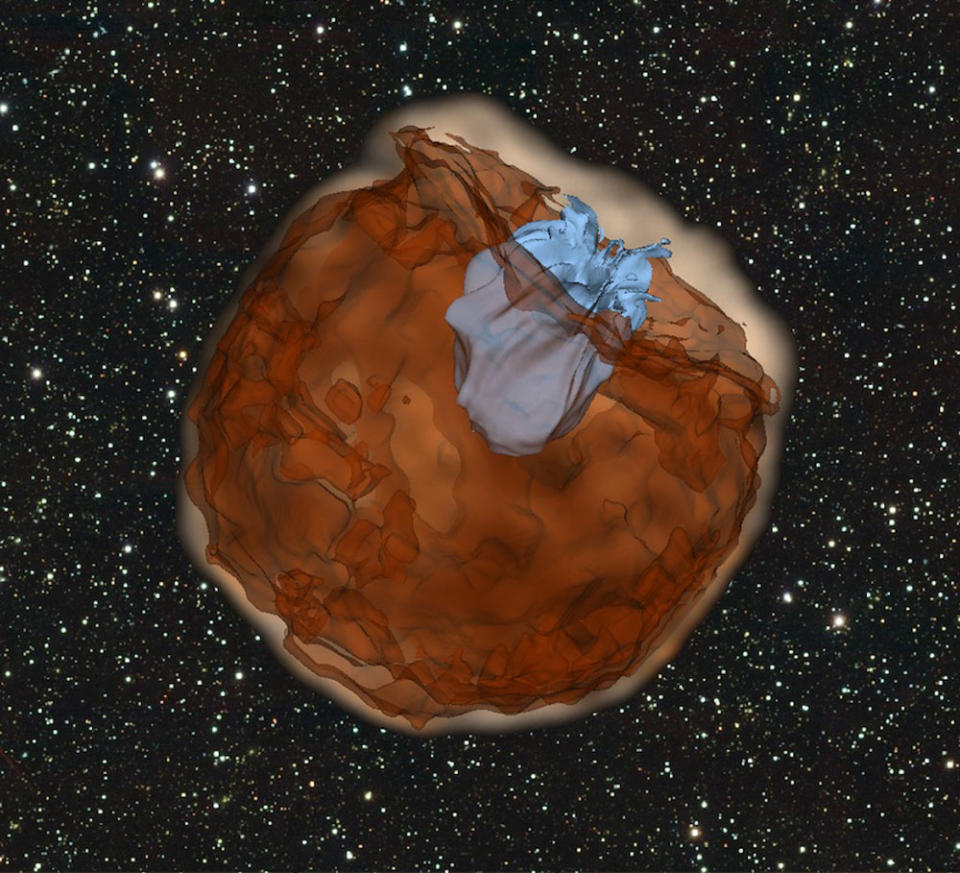Scientists have turned to artificial intelligence (AI) to better understand why some dead stellar remnants called white dwarf stars explode.
These energetic explosions, called Type Ia supernovae, could be responsible for forging heavy elements and spreading them throughout the cosmos. It is these elements that could become the building blocks of future stars, planets or even life. The emissions associated with Type Ia supernovae are also so distinctive that astronomers call these events “standard candles” and use them to measure vast cosmic distances.
Yet these cosmic explosions are very different from the supernovae that accompany the death of massive stars, resulting in the birth of neutron stars and black holes. Type Ia supernovae occur when a “dead” white dwarf star feeds on material stripped from a partner star.
Despite the significance of Type Ia supernovae in cosmic evolution and their usefulness as a measure of the sky, astronomers still don’t know exactly how and why they happen.
Related: White dwarfs are ‘heavy metal’ zombie stars that endlessly cannibalize their dead planetary systems
“When examining supernovae, we analyze their spectra. Spectra show the intensity of light over different wavelengths, which is influenced by the elements created in the supernova. Each element interacts with light at unique wavelengths and therefore leaves a unique signature behind the spectra,” lead researcher Mark Magee of the University of Warwick said in a statement. “Analyzing these features can help identify which elements are created in a supernova and provide more details about how the supernova exploded.”
Why do white dwarfs blow their tops?
In about 5 billion years, the sun will run out of hydrogen, the fuel needed for nuclear fusion in its core. The end of this hydrogen-helium fusion will also cut off the outward radiation pressure that currently supports the Sun against the inward pressure of its own gravity.
The core of the sun will collapse; the outer layers, in which nuclear fusion still takes place, will swell. This will turn the sun into a red giant, a stage in which it will expand into the orbit of Mars. This means that the inner planets of the solar system, including Earth, will be engulfed.
This red giant phase will last about 1 billion years, which is about 10% of the Sun’s total lifespan. During this phase, the Sun’s inflated outer layers will spread out and cool. The end result will be a smoldering stellar core, or white dwarf, surrounded by a cloud of gas and dust called a planetary nebula (which ironically has nothing to do with planets at all). For the Sun, the white dwarf phase will mark the end of its existence.
Other stars, about the size of the Sun, also turn into white dwarfs, but if they have a binary star partner, this may not be the end of their life. Instead of disappearing, some white dwarfs may go out with a bang.

Like a vampire leaping from the grave to feast on the blood of an innocent victim, a stellar corpse white dwarf can be close enough to a companion star (or if that star has swollen during its own red giant phase) begin with feeding. on the stellar material of his victim.
However, matter from this donor star cannot fall directly to the white dwarf’s surface, due to the conservation of angular momentum. Instead, it forms a disk between the donor star and the white dwarf, made of material that is gradually fed into the dense stellar remnant. This accumulated matter piles up on the surface of the stellar remnant, causing the white dwarf’s mass to exceed the so-called Chandrasekhar limit, which is equal to 1.4 times the mass of the Sun. This represents the mass limit a star must exceed to become a supernova.
The cannibalistic feeding of a white dwarf with a donor star ultimately leads to a runaway thermonuclear explosion: a Type Ia supernova.
One of the main differences between Type Ia supernovae and “core collapse” type supernovae, which occur when the cores of massive stars collapse on themselves and crush neutron stars or black holes, is that white dwarfs are completely destroyed by the explosion that takes place. results from their voracious diet.


To better understand this process, the team at the University of Warwick turned to machine learning. Using this form of AI, the team was able to speed up Type Ia supernova simulations, which traditionally require a lot of time and a huge amount of computing power. Typically, one model takes between 10 and 90 minutes, the team explained.
“We want to compare hundreds or thousands of models to fully understand the supernova. In many cases this is not really feasible,” Magee said. “Our new research will move away from this lengthy process. We will train machine learning algorithms on what different types of explosions look like and use them to generate models much faster.”
He added that, in a similar way to how humans use AI to generate illustrations or text, researchers can generate simulations of supernovae. The team can now compare the results of their AI-powered simulations with real-world observations of actual Type Ia supernovae.
“We will be able to generate thousands of models in less than a second, which will be a huge boost for supernova research,” Magee said. “Based on this data, we prepare models, which are compared with real supernovae to determine what type of supernova it is and exactly how it exploded.”


However, the benefits of this approach are not limited to speed. The greater accuracy of the AI-based process will also allow researchers to better determine the suite of elements forged around Type Ia explosions and then distributed into the cosmos.
“Examining the elements released by supernovae is a crucial step in determining the type of explosion that occurred, because certain types of explosions produce more of some elements than others,” Magee said. ‘We can then relate the properties of the explosion back to the properties of the supernova galaxies and make a direct link between the way the explosion occurred and the type of white dwarf that exploded.’
RELATED STORIES:
— Just before it exploded, this star gave out a mass of a sun
— The strange remains of the supernova explosion may contain a super-dense star
— Peer into the remains of an 800-year-old supernova and see a ‘zombie star’
The team will now try to expand their process so that it can be applied to other supernovae, including supernovae related to the formation of neutron stars and black holes. This could help connect the characteristics of these supernovae with the galaxies in which they occur.
“With modern studies, we finally have datasets of the size and quality to address some of the most important remaining questions in supernova science: how exactly they explode,” said team member Thomas Killestein from the University of Turku. “Machine learning approaches like this enable studies of larger numbers of supernovae, in more detail and with more consistency than previous approaches.”
The team’s research was published in May in the Monthly Notices of the Royal Astronomical Society (MNRAS),